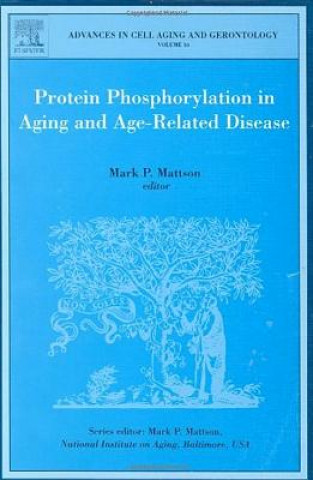
Livrare
Consilier de cumpărături





Nu se pretează? Nu contează! La noi puteți returna bunurile în 30 de zile
 Voucher cadou
orice valoare
Voucher cadou
orice valoare
Cu un voucher cadou nu veți da greș. În schimbul voucherului, destinatarul își poate alege orice din oferta noastră.
Protein Phosphorylation in Aging and Age-Related Disease
 engleză
engleză
 361 b
361 b
30 de zile pentru retur bunuri
Ar putea de asemenea, să te intereseze


It can be argued that ATP is the most important molecule in cells. Not only is ATP the key energy source for cells, but it is also the source of phosphate groups that are transferred to a variety of substrate proteins via the action of elaborate families of protein kinases. An equally elaborate array of protein phosphatases can remove phosphate groups from proteins. It is now well established that protein phosphorylation is a widely used mechanism for cells to selectively modulate the function of a variety of proteins including enzymes, ion channels and pumps and structural proteins. In this volume of ACAG leading experts describe the evidence that protein phosphorylation is altered in aging and age-related disease. Protein phosphorylation controls fundamental processes such as transcription and translation, regulation of the cell cycle, signalling within and between cells, cell motility, synaptic function and so on. Recent findings are revealing how phosphorylation dependent signalling cascades may control lifespan with a prime example being the insulin-signalling pathway first described in c-elegans and now emerging as an important regulator of lifespan of mammals also. Many of the functional changes that occur during aging such as impaired learning and memory and altered energy metabolism are controlled by protein phosphorylation and it is, therefore, important to understand how mechanisms of protein phosphorylation may either mediate aging or provide adaptive responses that allow successful disease-free aging. The authors in addition to considering the roles of protein phosphorylation in aging describe the evidence that abnormalities in protein phosphorylation contribute to the pathogenesis of major age-related diseases including diabetes, atherosclerosis and neurodegenerative disorders such as Alzheimer's and Parkinson's diseases.
Informații despre carte
 engleză
engleză
Categorii




 Cum să cumpăr
Cum să cumpăr
























